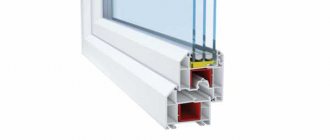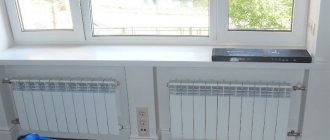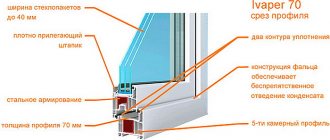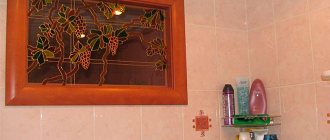When conventional radiators do not fully cope with the functions assigned to them or a different type of heating system is used in the premises, it is recommended to install heated windows to ensure comfortable conditions. Thanks to this solution, it is possible to minimize heat leakage and maintain optimal temperature conditions in the rooms at the lowest possible cost. There are several options for heating windows on the market, so you can always choose the most suitable one.
Warm loggia
Warm loggia
Heated windows. Warm loggia. Warm balcony.
Modern architectural and construction solutions in the field of facade glazing can give any building a special look. Glass structures allow the architect to realize the most original and non-standard projects, and looking at the appearance of urban new buildings, it becomes obvious that the use of glass structures by developers is the most popular trend. This is explained by the fact that façade glazing technology allows you to expand the usable area of residential premises, increase visibility and add natural light to them. The glazed facade gives the house originality and makes it stand out against the backdrop of typical buildings.
Heating of windows and heating of rooms with panoramic glazing.
The appearance and design of heating devices in rooms with stained glass windows, from the point of view of design and functional efficiency, is important, since heaters that are inconsistent with the architectural design can completely destroy it. Conventional panel or aluminum radiators are not suitable in this case.
The reason is not only that they will not fit into the overall design, both internal and external, but also because the surface of the glass is the coldest in the entire room and condensation is likely to form on it. For example, in the kitchen the relative humidity level can reach up to 80%. The dew point value is 18-19°C. If the temperature on the surface of the window is at least 3 °C above the dew point, i.e. about +21 - +24 °C, then the windows will not fog up, in other words, “cry”. Accordingly, in order to prevent condensation from falling on the glass, it is most rational for heating devices to be located along the entire perimeter of the glazing, creating a continuous thermal curtain. Heating windows using warm baseboards is most effective. Warm air rising in a continuous stream along the entire perimeter of window structures will create a reliable thermal barrier and will not allow moisture to condense on the inner surface of the glass.
Warm loggia. Warm balcony.
How to make a loggia warm? Let's consider a popular trend in apartment redevelopment - combining a loggia with an adjacent room, living room or kitchen. Combining a loggia with an apartment is an excellent solution to increase usable space, especially if the dimensions of the apartment are small. Such a reconstruction usually entails special measures to improve the quality of windows, additional insulation of walls, floors and ceilings, since the thermal resistance of enclosing structures should not be lower than building standards (see SNiP thermal protection of buildings). Are you interested in preventing the heat on the balcony from escaping onto the street? Then you can’t do without reliable thermal insulation
Insulating the loggia is very important, since an insufficient level of thermal insulation of the fences will lead in the future to dampness, condensation, the formation of mold, and disruption of the microclimate in the room combined with the loggia, so it is better not to save on insulating loggias and balconies
But insulating the loggia is not all. Thermal insulation is like a person’s clothing; it prevents heat from escaping, but does not produce it. In order for a loggia or balcony to become truly warm, heating must be installed there. The loggia becomes part of the living space, which means the total amount of heat loss will increase, and the heating devices installed in the room initially were not designed for the connected volume and heating the loggia will require additional thermal power. Heating a loggia, taking into account the specifics of the room, will be especially effective using baseboard heating. Uniform heating of the inner surface of the walls will create an additional layer of thermal protection, preventing the formation of dampness in the corners and condensation on the windows.
Insulation of balconies and loggias in combination with installed warm baseboards allows you to achieve the required level of comfort in cold weather. Heating a loggia in urban conditions is most simply and quickly accomplished using the electric version of the baseboard system. A warm electric baseboard can be quickly installed even in winter, when the lack of heat on the loggia is especially noticeable, and electric heating does not require preparatory work.
How windows are heated
The surface of the window is cold in central Russia, usually from November to March, when the air temperature outside is sub-zero and the sun shines dimly and rarely appears. Due to the low temperature of the glass, heat flows out of the room, and the air near the window is cooled. In addition, normal air circulation is disrupted, since near the window it drops to the floor. As a result, a person experiences discomfort, feeling a rather sharp change in air temperature within one room: it can be much colder near the window than, say, in the middle of the room. To eliminate this effect, water heating radiators are placed in window sill niches so that the air near the windows warms up and begins to move from the floor to the ceiling. But it's not that simple. Firstly, each radiator takes up a certain usable area of the room, and secondly, the window sill should not be too wide so as not to interfere with the air blowing through the glass. Insufficient heating of the window with warm air will lead to condensation on it, so the temperature of the radiator will have to be increased, and this will increase energy consumption.
Heating options for windows
When conventional radiators do not fully cope with the functions assigned to them or a different type of heating system is used in the premises, it is recommended to install heated windows to ensure comfortable conditions. Thanks to this solution, it is possible to minimize heat leakage and maintain optimal temperature conditions in the rooms at the lowest possible cost. There are several options for heating windows on the market, so you can always choose the most suitable one.
In what cases is it recommended to use heated windows?
If the window openings have a large area, then it is definitely better to immediately install heated windows, since the flows emanating from the radiator are not able to create an effective thermal curtain. These models are also recommended when rooms are heated:
- heated floor system;
infrared heaters installed outside window openings;
warm air through ventilation ducts;
fireplaces, etc.
In all of the above cases, there are no full-fledged thermal curtains opposite the window openings, which can provoke a whole list of negative consequences:
- rapid decrease in temperature in the rooms;
excessive condensation;
the appearance of fungus and mold on various elements of window structures.
Aluminum, wooden and plastic heated windows do not have such problems. In addition, they not only help create comfortable conditions for living and working, but also allow you to significantly reduce heating bills.
Window heaters
These products are designed to slow down the process of heat exchange between indoor spaces and the street. They also allow you to additionally warm the air in the rooms, thereby reducing the load on the central heating system.
Today, window heaters are represented by two types of devices:
- infrared elements - devices whose operation does not generate air currents, since they heat objects located in their area of action;
air thermal curtains - such a window heater supplies a powerful stream of air heated to a certain temperature parallel to the opening, due to which an additional invisible barrier is created between the room and the street.
Such devices not only retain heat and heat the rooms, but also prevent the appearance of drafts that can occur if the windows are slightly depressurized.
Flexible window heating system
Infrared elements and thermal curtains are generally effective, but have some disadvantages. For example, they require space for installation, sometimes create noise and in some cases have a negative impact on the interior. European engineers have figured out how to make a quiet and unnoticeable device that prevents windows from cooling. Its work is based on thin heating elements, which are a flexible tape that runs along the perimeter of the glass unit. Such a system consumes little energy and increases the temperature of the glass unit, eliminating cold bridges in both blind and active sashes.
In addition to being economical and compact, this system is suitable for windows that are already in use. Thanks to the minimal thickness and flexibility of the heating elements, it is possible to remove the glass unit from the frame, wrap it in tape and insert it back, and then connect it to the control unit. This device prevents condensation from forming and slows down the heat transfer process. Its integration guarantees the absence of frost on the windows even at very low temperatures.
The flexible system is best suited for openings with relatively small dimensions, since it slightly heats these products only around the perimeter. If significant heat loss through the windows is expected, then it is better to use a device that is able to heat the glass over its entire area.
Heated double-glazed windows
Recently, there has been an increase in demand for windows in which heated double-glazed windows are installed, capable of creating a thermal curtain directly in the air chamber itself. Their operating principle is based on heating a special coating, evenly distributed over the entire area of the glass, with the passage of electric current. A detailed review of these models has been published on OknaTrade. This modification will cost more than the two previous devices, but it is much more advanced and compact than heaters and more functional than flexible heating tapes. In Russia, heated double-glazed windows are recommended for installation in regions with harsh climates, as well as glazing of verandas, terraces, winter gardens and swimming pools.
Electrically heated glass is the basis of the design
Heated glass structural elements:
Conductive coating
Film
Glass
Electrodes
Thermal radiation
A special electrically conductive coating is applied to electrically heated glass, which acts as a heating element. It is a thin layer of solid low-emissivity material that has light transmission and energy-saving properties comparable to ordinary glass.
Blitz survey: When choosing a plastic window, what is important to pay attention to? From the articles you can learn how to choose plastic windows depending on the design and heat and sound insulation characteristics.
To connect the coating to the electrical network, special current-carrying bars are applied to the glass in the edge zones. The coating reflects IR radiation from inside the room, thus reducing heat loss during the cold season, and UV radiation from the outside, thereby reducing the penetration of excess heat in hot weather and protecting interior items from damage.
The glass undergoes a mandatory heat strengthening operation and/or is laminated, therefore it is safe for use in any glazing systems. The electrically conductive coating is always located inside the glass unit or triplex, which eliminates the possibility of touching the conductive layer. If the glass is cracked, the contact is interrupted and voltage is no longer supplied to the glass unit. Using integrated sensors, a special electronic system monitors the integrity and temperature of the glass.
Expert commentary
Vladislav Dobronravov
Leading technical specialist at Okna-Media company
The impetus for the development of translucent electric heating element technologies was the aviation need for safe glazing in pilot cabins that provides sufficient visibility and can effectively remove ice and condensation in all weather conditions.
Features of arranging transparent walls
The arrangement of transparent walls that decorate the exclusive interior of the room is accompanied by taking into account a number of important nuances.
- A lot of thermal energy is lost through large window structures, changing the microclimate of the room.
- The difference in parameters of external and internal temperatures forms the air space where cooled flows move.
- In winter, frosty patterns appear, rising temperatures condense vapors, which, after flowing down, become an excellent habitat for harmful fungi.
Preserving the aesthetic appeal of the panoramic glazing design is achieved by assembling a special heating system.
Technical characteristics of heated double-glazed windows
Table of technical parameters of warm double-glazed windows:
| Parameter | Meaning |
| Size (minimum), cm | 30x40 |
| Size (max), cm | 240x480 |
| Glass unit thickness (1 chamber), mm | 17 |
| Glazing thickness (2 chambers), mm | 30 |
| Noise insulation, dB | 31 |
| Thermal insulation, m2xS/W | 100 |
| Power (minimum), W/m2 | 50 |
| Power (maximum), W/m2 | 800 |
| Maximum heating temperature, degrees | +55 |
| Level of protection against UV rays, % | 95-98 |
Bimetallic devices for panoramic windows
This type of radiator belongs to heat supply equipment, the high cost of which best corresponds to the quality.
Bimetallic radiators differ:
- High working pressure.
- Compatible with other metals. In them, aluminum is used only for the manufacture of the shell, which increases the aesthetics of appearance and heat transfer. As for the internal casing, equipped with outlets for connection to the system, it is made of stainless steel or black steel.
The height of bimetallic radiators for panoramic windows ranges from 24.5 to 45 centimeters.
Glass heating power and temperature
Let's consider the power of electrically heated glass:
- Main or additional heating. Power consumption will be 350-500 W/m2, glass heating will be 45-55 degrees.
- To create a comfort zone, you will need a power of 200 to 300 W/m2; it will allow you to heat the packages up to 30-40 degrees.
- For the prevention and destruction of condensation, 100 - 200 W/m2, a temperature of 25-30 degrees, is sufficient.
- Finally, it is possible to clear bags of ice crust and snow with a power of 300 to 600 W/m2; it will provide heating up to +40-60 degrees.
Related articles:
◾Triangular windows
◾How windows are made
◾Bay windows
The best heating for panoramic glazing
The Warm Plinth system is recommended for installation under floor-to-ceiling windows.
Panoramic glazing, floor-to-ceiling windows, and a picturesque view from the window are signs of elite modern housing and are mostly represented in business-class housing and penthouses.
Panoramic windows have both pros and cons. Glass “walls” provide maximum daylight. Large windows let in a lot of sunlight and heat, but in summer an excess of sunlight leads to the fact that the room is very hot, and in winter, on the contrary, it is cold, since a large glazing area means significant heat loss.
The thermal conductivity of glass is significantly higher than the thermal conductivity of walls. Therefore, it is necessary to use more energy-efficient window systems and increase the heating intensity of the room.
It is most optimal to install heating equipment around the perimeter of the window unit to help the windows warm up from the inside and raise the surface temperature of the inner glass above the dew point. However, installing a convector or radiator against the background of panoramic glazing will significantly spoil the aesthetics and will look ridiculous with a radiator in the center... In-floor convectors require construction preparatory work and are quite expensive. Thermal curtains with top and side placement are not friendly to physics...
What is the price
The electrical power supplied to the glass is calculated individually in each case. To create a comfortable indoor microclimate, the glass surface temperature must be maintained within the range from +20 to +30 °C, which is usually achieved with a power density of about 0.1 kW/m².
When using electrically heated glass as the main heating system, it is necessary that its surface temperature be at a level of +30...+45 °C, which requires a specific power of 0.3 kW/m². In the second case, the cost of electricity will be up to 450 rubles/m² per month with the glass constantly on, and this, frankly speaking, is not a very cheap way to heat a home, given that there may be several such windows even in one room.
Electrically heated glass is supplied to the domestic market by KET-GLASS LLC, the French SAINT-GOBAIN GLASS, the Finnish HATRICK OY, etc. The maximum glass dimensions are 3 × 6 m with a thickness of 4 mm. The voltage used can be either 220 V or safe 32 or 12 V. The cost of 1 m² of such electrically heated glass ranges from 9,000 rubles.
The efficiency of electrically heated double-glazed windows as heating devices is still significantly lower compared to traditional heating systems
Low radiators
A worthy replacement for standard radiators will be their low variety - they are in no way inferior in quality, but at the same time they do not visually burden the interior at all and leave a fairly wide viewing angle.
They can be installed directly in front of double-glazed windows: they protect against condensation and drafts. It is very important to choose the model that will be ideal for your home. For example, cast iron batteries take a long time to heat up, but at the same time they hold high temperatures very well and on average last up to 50 years
Steel and aluminum heat up faster, but at the same time they do not please with their strength. Bimetallic models can be considered the best option - they combine both good heating and high strength.
Rating of the TOP 16 best wall-mounted electric heaters
| Place | Model | Price |
| The best infrared models | ||
| #1 | Ballu BIH-AP4-1.0 | |
| #2 | Hyundai H-HC7-20-UI291 | |
| #3 | Nikaten NT 200 | |
| #4 | Ballu BIH-L-3.0 | |
| The best convectors | ||
| #1 | Electrolux ECH/R-1500 T | |
| #2 | Electrolux ECH/R-2500 T | |
| #3 | Noirot Spot E-5 Plus 1500 | |
| #4 | Ballu BEC/EVU-2000 | |
| The best fan heaters | ||
| #1 | Electrolux EFH/W-7020 | |
| #2 | Ballu BFH/W-102 | |
| #3 | Thermex Stels 2000E | |
| Infrared-convector models | ||
| #1 | Electrolux EIH/AG2-2000E | |
| #2 | Electrolux EIH/AG2-1500E | |
| #3 | Ballu BIHP/R-2000 | |
| #4 | STN NEB-M-NSt 0.7 (mChk/mBq) | |
Page navigation:
DIY portable heater
The above assembly diagram is good when there is electricity nearby. But there are often situations when you need to heat a small space without any electricity. How to get out of such a situation?
If necessity forces you to be in places where there is no electricity, then you probably have the most ordinary gas burner with a small cylinder. It is designed to heat containers that simply need to be placed above the flame. But if you improve it slightly, you can get a very functional homemade heater for a winter tent.
For such a device, a mesh heat dissipator is initially installed on the burner. To save money, you can also make it yourself from an ordinary household sieve. Fasteners for fixing to the burner can be cut from galvanized steel according to the diameter of the sieve, adding four small squares, which will act as fasteners.
Once you attach the sieve to the cylinder adapter, the resulting thermal effect will be greater, but still not enough to feel comfortable. Therefore, the design will have to be further improved.
For this you will need a metal mesh. From it you cut a workpiece according to the diameter of the sieve, the height of the workpiece is twice the height of the sieve. You need to cut out another fastener from a galvanized sheet, in which it is advisable to make small holes along the edges, along the entire diameter. This will make your traction better.
Such a homemade nozzle can be attached using an adapter to a collet cylinder and to a gas cylinder - the effect is approximately the same. But believe me, it will exceed all your expectations. It is quite possible to make a gas heater with infrared radiation without spending a lot of money. And the effect is simply mind-blowing.
Installation of film-type IR heaters
Installation of flexible film heaters, regardless of the installation location, does not require the contractor to have high-level professional skills, but must be carried out in compliance with the following rules:
- the installation site of the PLEN must be level and dry;
- cutting rolls, if provided for by the model, should be performed only according to the markings specified by the manufacturer;
- testing the functionality by plugging in a rolled-up heater is prohibited;
- the length of one strip film fragment should not exceed 8 m;
- adjacent strips of the heating system are located at a distance of at least 5 mm;
- bending the PLEN at an angle of more than 90 degrees is not allowed;
- installation of the film to the base is carried out with staples using a construction stapler or special fasteners (the use of ordinary nails and self-tapping screws is not effective);
- It is prohibited to carry out installation work at sub-zero air temperatures - after warming up the room, the film strips will increase in size and form folds.
Possible design solutions
At the request of the customer, the glass in heated double-glazed windows is made in different designs: its surface is made mirror, tinted in the desired color, stained glass is made, and the Tiffany technique is used.
In short, in the manufacture of heated double-glazed windows, any modern glass design technique is used.









